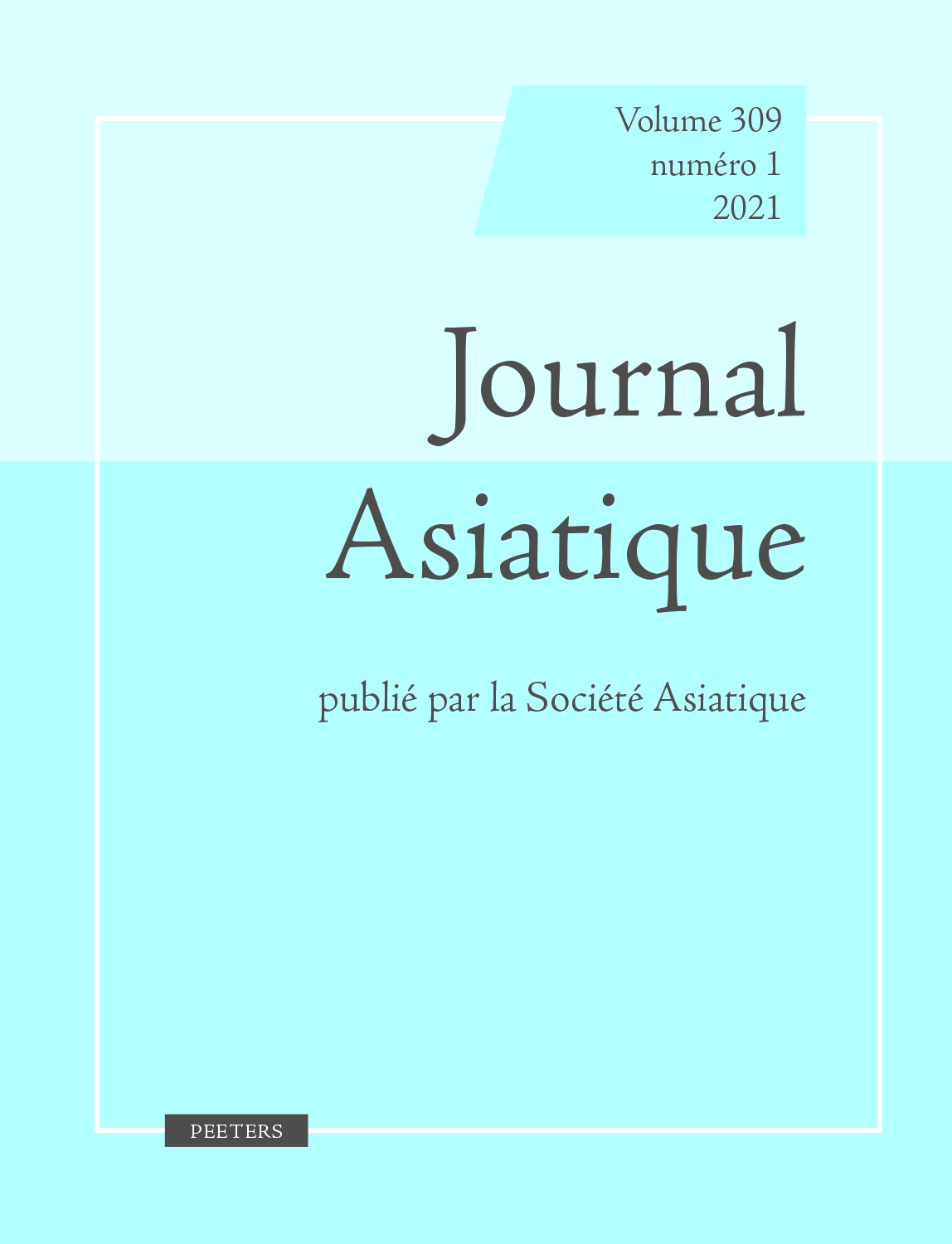 previous article in this issue previous article in this issue | next article in this issue  |

Preview first page |
Document Details : Title: The So-called Risālat al-Ḥurūf (Epistle on Letters) Ascribed to Sahl al-Tustarī and Letter Mysticism in al-Andalus Author(s): EBSTEIN, Michael , SVIRI, Sara Journal: Journal Asiatique Volume: 299 Issue: 1 Date: 2011 Pages: 213-270 DOI: 10.2143/JA.299.1.2131065 Abstract : Our paper reconsiders the ascription of an unnamed epistle on letters to Sahl al-Tustarī, a distinguished Ṣūfī master from Baṣra (283/896). This short epistle is part of a unicum manuscript: Chester Beatty no. 3168, a codex comprising of various manuals and treatises on letters, divine names, invocations, esoteric practices and similar topics. It was found by M.K.I. Ja'far, who, although this epistle appears in the manuscript with no title and no explicit author, attributed it to Sahl al-Tustarī and named it Risālat al-Ḥurūf (Epistle on Letters). Under this title and authorship the text was published twice: first by Ja'far and later by Pillar Garrido. The paper consists of an introduction, translation and a detailed commentary of the epistle. In addition to reviewing the question of authorship, our paper wishes to examine the mystical philosophy which this epistle, as well as other sources, exhibit; in particular the mystical-philosophical vision of letters as the building blocks of creation in a hierarchical cosmological and cosmogonic process. Working from a comparative and historical approach, we came to the conclusion that this epistle could not have been composed by Sahl al-Tustarī. Although we could not offer an identification of authorship, we could place the epistle within an intellectual milieu in which ‘letter mysticism’ occupied an important position, especially from an occult-theosophical approach. We could find parallels of such an approach in Shī'ī-Isma'īlī literature as well as in the works of Andalusian mystics, in particular the tenth-century Ibn Masarra in his Kitāb khawāṣṣ al-Ḥurūf (Book on the Properties of Letters – also included in the same codex), and the twelfth-thirteenth-century Ibn al-'Arabī. Cet article met en question l’attribution d’une épître sur les lettres de l’alphabet à Sahl al-Tustarī, un maître soufi de grande renommée, originaire de Baṣra (m. 283/896). Il examine aussi la philosophie mystique qu’exposent cette épître et d’autres sources, notamment la vision mystico-philosophique des lettres de l’alphabet comme étant des unités de base dans la création selon un processus hiérarchique, cosmologique et cosmogonique. L’article comprend une introduction, une traduction et un commentaire détaillé de ce traité, qui est inclus dans un manuscrit unique découvert par M.K.I. Ja'far dans le codex Chester Beatty de Dublin (no. 3168, ff. 166-174). Ja'far a attribué ce traité à Sahl al-Tustarī et lui a donné le titre Risālat al-Ḥurūf (Epître sur les lettres [de l’alphabet]). Cette épître a été publiée deux fois sous ce titre et ce nom d’auteur, d’abord par Ja'far, puis par Pillar Garrido, bien qu’elle apparaisse sans titre ni nom d’auteur dans le manuscrit. En s’appuyant sur une approche comparative et historique, il a été possible de prouver que cette épître n’a pu être composée par Sahl al-Tustarī. Bien que l’on n’ait pu aboutir à l’identification de son auteur, cette épître se situe bien dans un milieu intellectuel où le mysticisme des lettres occupait une place importante, tout particulièrement d’un point de vue occultiste et théosophique. La littérature shî'ite-ismaélienne offre d‘importants parallèles quant à ce point de vue. On en trouve aussi dans les oeuvres des mystiques andalous, en particulier chez Ibn Masarra (10e siècle), dans son Kitāb khawāṣṣ al-Ḥuruf (Livre sur les propriétés des lettres), lequel est d’ailleurs inclus dans le même codex. D’autres parallèles encore apparaissent chez Ibn al-'Arabī, le grand mystique du treizième siècle. |
|


